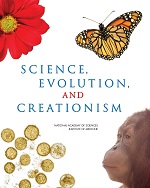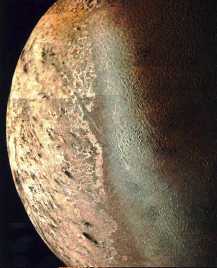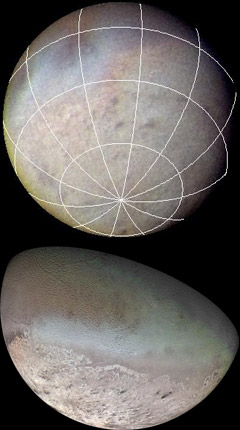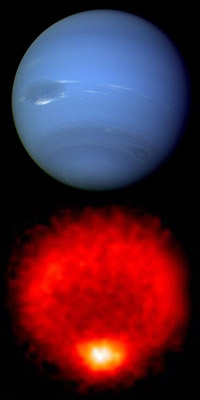This is an image of Triton.
Click on image for full size
NASA
Triton
Triton was discovered by W. Lassell in 1846. Of the 8 moons, it is the 2nd farthest from Neptune.
Triton may be one of the largest of the icy moons with a diameter that is about half the distance across the United States.
Triton is very interesting. It has a neat surface, and is one of the few moons with the possibility for a weak atmosphere and an environment suitable for life.
You might also be interested in:

How did life evolve on Earth? The answer to this question can help us understand our past and prepare for our future. Although evolution provides credible and reliable answers, polls show that many people turn away from science, seeking other explanations with which they are more comfortable.
...more
This image of Triton reveals many neat features of its surface. The surface of Triton's surface is a mix of Ganymede's and Europa's surfaces. Old areas of Triton's surface have many craters and younger
...more
Triton is most like Jupiter's moon Europa. Like Europa, the interior of Triton may have been warm enough at one time to contain a liquid layer just under the surface. On Earth, we know that there are some
...more
Triton is the largest moon of Neptune. It is a very odd moon. The poles of Triton are especially interesting. Triton has a polar ice cap at the South Pole. Earth has ice caps at its poles too. On Earth
...more
Pictures taken by the Hubble telescope show that Neptune's moon, Triton, has heated up since 1989. That means global warming isn't something that just happens on Earth.This increase in temperature is having
...more
Neptune has // Call the moon count function defined in the document head print_moon_count('neptune'); moons. It also has rings, but its rings are different from Saturn's. Neptune's largest moon is named
...more
The South Pole of the planet Neptune is a bit strange. Triton, Neptune's largest moon, also has interesting poles. Neptune is tilted on its axis by about 28°. That isn't so strange... Earth is tilted,
...more
Triton was discovered by W. Lassell in 1846. Of the 8 moons, it is the 2nd farthest from Neptune. Triton may be one of the largest of the icy moons with a diameter that is about half the distance across
...more










